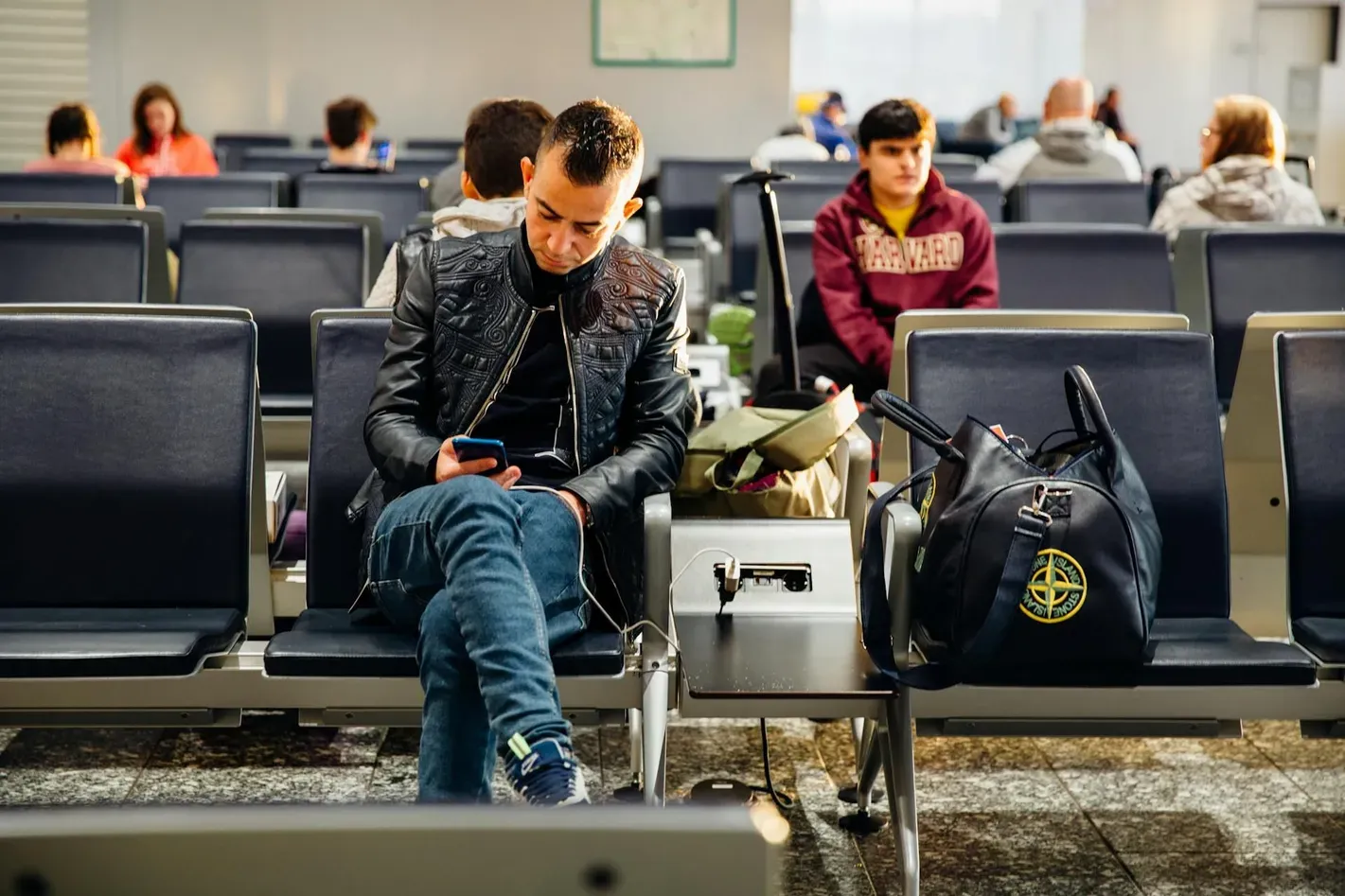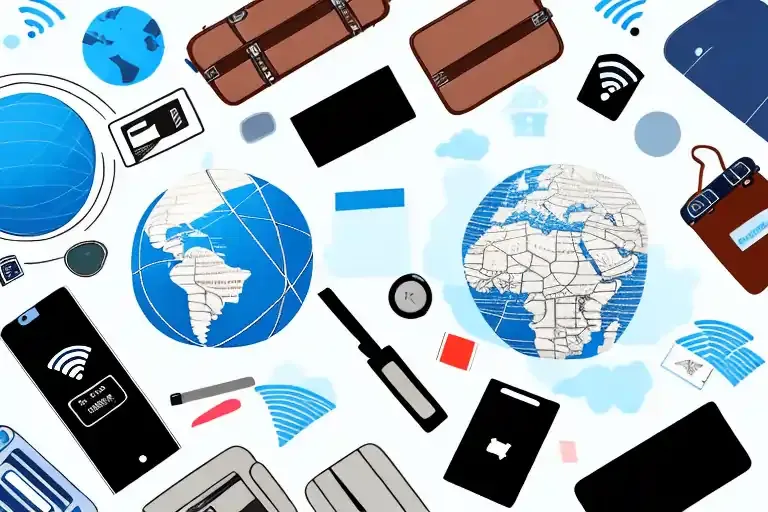travel hacks
Renting a local phone: Is there still a case for it?
Should you rent a local phone or just get a travel eSIM?
International travel has become increasingly accessible, making it easier for people to explore new destinations and experience different cultures. One crucial aspect of traveling abroad is staying connected, and with the advancement of technology, there are many different options in staying connected. From international roaming, renting a pocket WiFi, getting a local SIM card, to even renting a local phone — how do you make a decision on which to get? Our previous blog posts break down the different options, and in this latest post, we will take a look at the option of renting a local phone, and how that option compares with getting a travel eSIM.

Renting a Local Phone
Renting a local phone while traveling abroad has been a popular choice for many years. Before multi-SIMs became a common feature in many of the latest devices today, renting a local phone was a preferred choice for many travelers who needed to keep their primary lines active while traveling. By renting a local phone, they were able to keep their primary lines active in their own device; and the rented device would act as a hotspot and their primary means of communication during their travels.
Today, most devices come with multi-SIM support — whether it is support for dual-SIMs or eSIMs, there are ways that you can still keep your primary line active while still staying connected on your travels. With that, would there still be a case for renting a local phone? Let's look at some of the advantages and disadvantages associated with this option:
Advantages of renting a local phone
- Alleviates concerns on compatibility issues: Renting a local phone almost guarantees that the device will work with local networks. With a local phone, you wouldn't have to worry about compatibility issues or network coverage Local rental phones are often equipped with SIM cards from reputable local carriers, ensuring good network coverage and call quality.
- Local Phone Number: When you rent a local phone, this will also typically always include a local phone number which comes with talk-time. You'll have a local phone number, which can be convenient for making local calls or receiving calls from local businesses.
- You just don't want to use your own phone: Perhaps a reason why you wouldn't want to use your own phone could be that you wanted to disconnect from everything back at home and go on a true social detox. In such cases, renting a local phone would be a great alternative. This will ensure that you can still get use essential apps like maps, and you can still have the option to reach out for help should that need arise, all without the temptation of logging in to your own social media accounts.
- No Need for an Unlocked Phone: And on a more practical note, if your personal smartphone is carrier-locked, then renting a local phone would be a great option.
Disadvantages of renting a local phone
- Cost: Renting a phone can be expensive, with daily or weekly rental fees, and additional charges for calls, texts, and data.
- Limited Features: Rental phones may not have the latest features or apps, limiting your smartphone experience.
- Inconvenience: You may need to pick up and return the rental phone at the airport or a local store, which can be inconvenient, especially if your travel plans change. Renting a local phone also means an additional device to manage, and to make sure that the batteries are sufficiently charged for your travels.
Getting a Travel eSIM
Renting a local phone is one of the most traditional options for staying connected when you travel, and on the flip side, we have one of the newest options — getting a travel eSIM. eSIMs (embedded SIM cards) are a relatively new technology that allows you to connect to local networks without the need for a physical SIM card.
Getting a travel eSIM is rather similar to getting a travel SIM, except better. Do away with the hassle and trouble of picking up a physical SIM card and inserting it into your phone. In a few taps on your device, you will be able to buy, install, and activate your eSIM and get connected.
Highly rated 4.4/5.0 on Trustpilot
Save up to 50% on roaming
Fast and reliable network
Here are the pros and cons of using an eSIM while traveling:
Advantages of a Travel eSIM
- Cost-Effective: eSIMs are often more cost-effective than renting a local phone. Many providers of travel eSIMs provide data at near-local costs. And you can choose data plans that suit your needs and switch providers easily if you find a better deal.
- Convenience: Activating an eSIM can be done online, saving you time and the hassle of visiting a physical store. You can also purchase eSIMs in advance of your trip.
- Flexibility: You can use your eSIM for multiple trips, switching between different plans and providers as needed. Using a travel eSIM also allows you to keep your primary line active even as you travel.
Disadvantages of a Travel eSIM
- Compatibility: To use an eSIM, your device needs to be eSIM-compatible. And while the newer phones are mostly eSIM-compatible, if you are on an older device, your phone might not necessarily be eSIM-compatible, which eliminates this as a possible option for you to stay connected.
- Initial Setup: Installing, and in some cases activating, an eSIM will require an internet connection. If you are only installing and activating your eSIM at the airport upon arrival, there could be some stress around whether the airport provides free WiFi or internet connection so that you can set up your eSIM and get going. But this concern can be easily alleviated by simply installing and activating your eSIM just before you fly.
- Lack of Local Phone Number: Using a travel eSIM typically means you'll have a foreign phone number, which might be less convenient for receiving local calls or texts. But, it is definitely possible to get around on your travels even if you do not have a local phone number.
Get a Nomad Travel eSIM
Nomad offers data plans in over 200 countries, and you can be sure to find one that is suitable for your travel needs. And if you will be traveling across multiple countries, there are also regional plans available so you can stay seamlessly connected as you hop between countries. Data plans are available from as low as $1.50/GB.
How to get a Nomad eSIM?
Getting a Nomad eSIM is very easy. Simply create an account on the Nomad website, select the plan that you want, and check out! Or, download the iOS or Android app and you can easily purchase and manage your data on the go!
After you purchase your eSIM, you will receive an email containing information on how to install and activate your eSIM. Remember that you will need a stable internet connection to install your eSIM, but activation starts only upon use. It is recommended to install your eSIM when you are at home so that you can start using your data once you arrive at your destination.
And in the event that you run out of data, don't worry! Some of Nomad's plans come with the option to purchase add-ons. The purchase of add-ons will add more data to your existing eSIM, so you won't need to install a brand-new eSIM.



